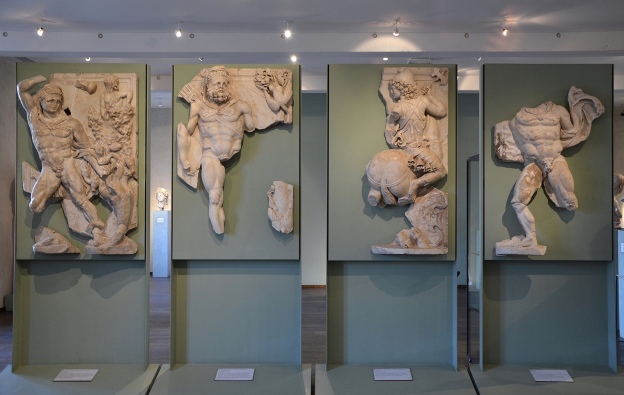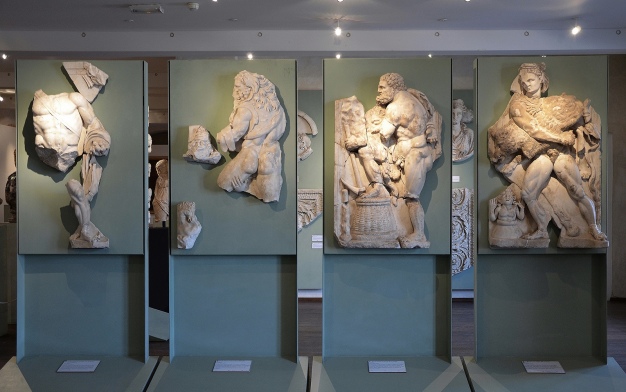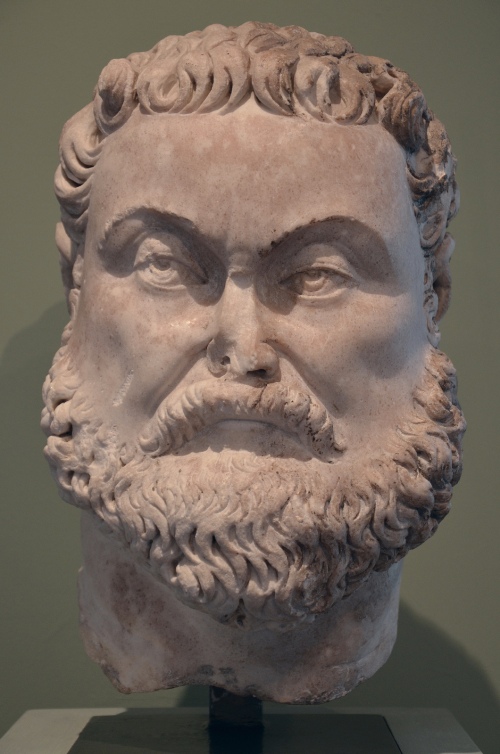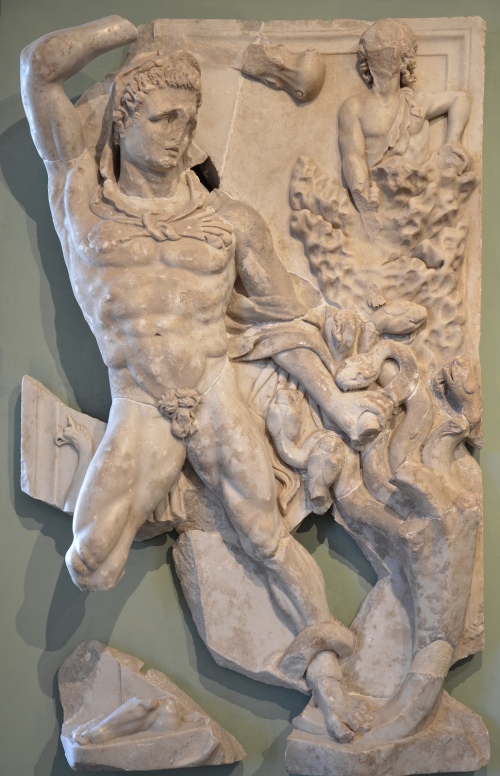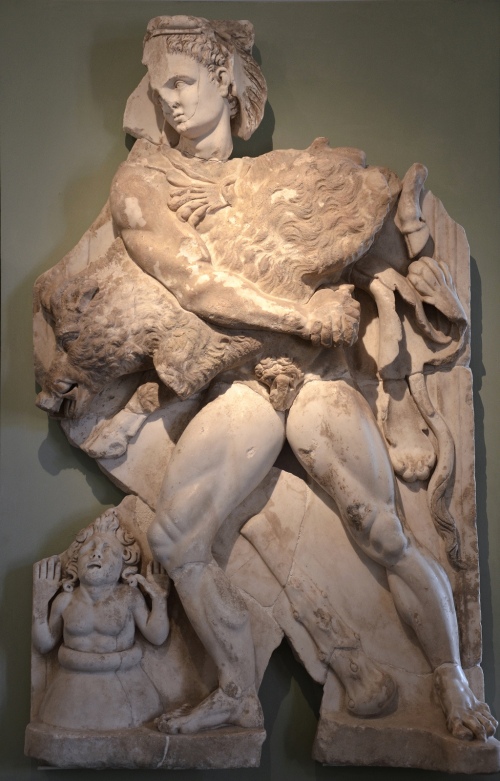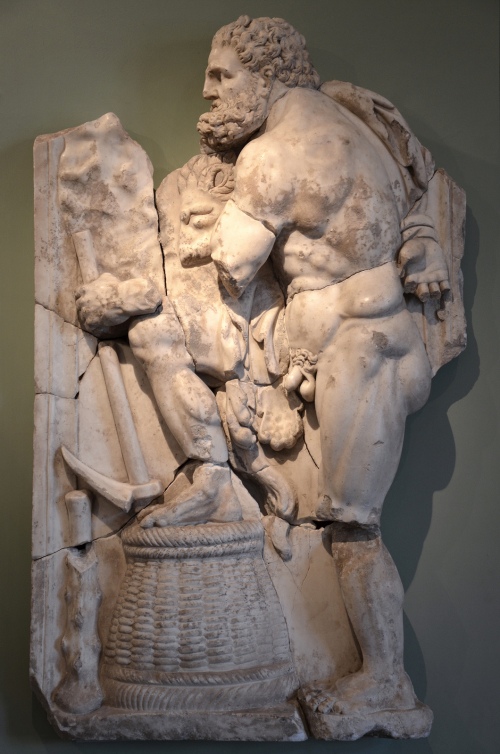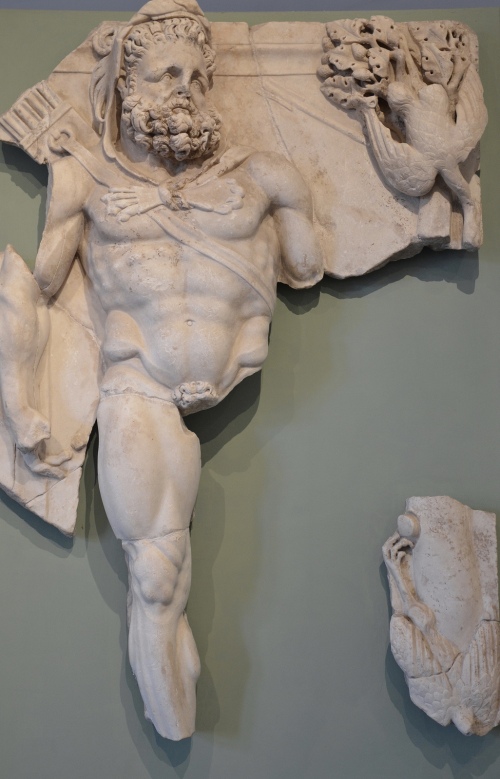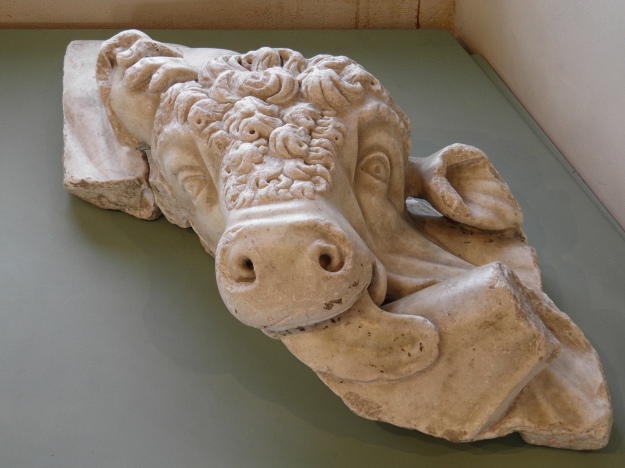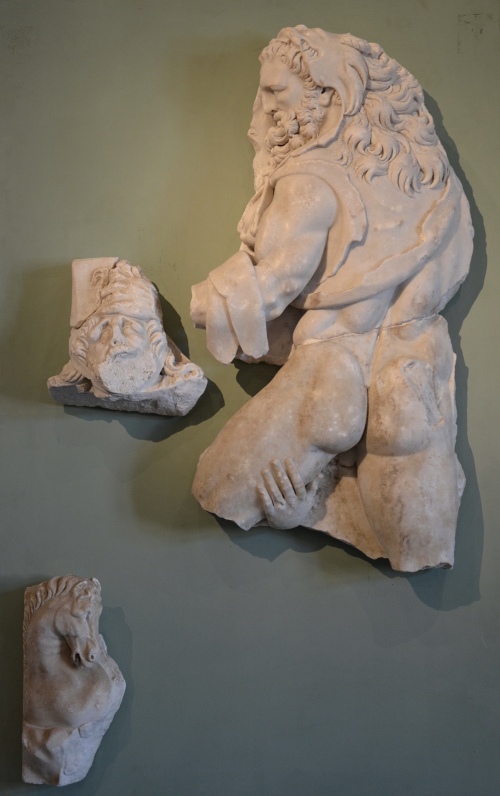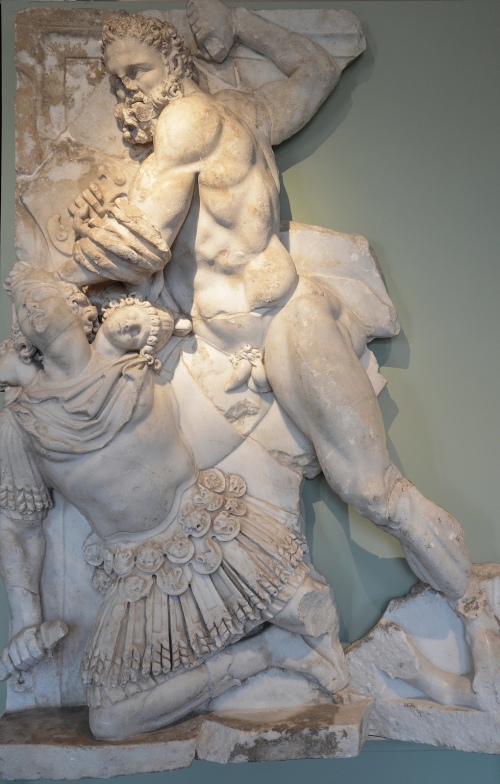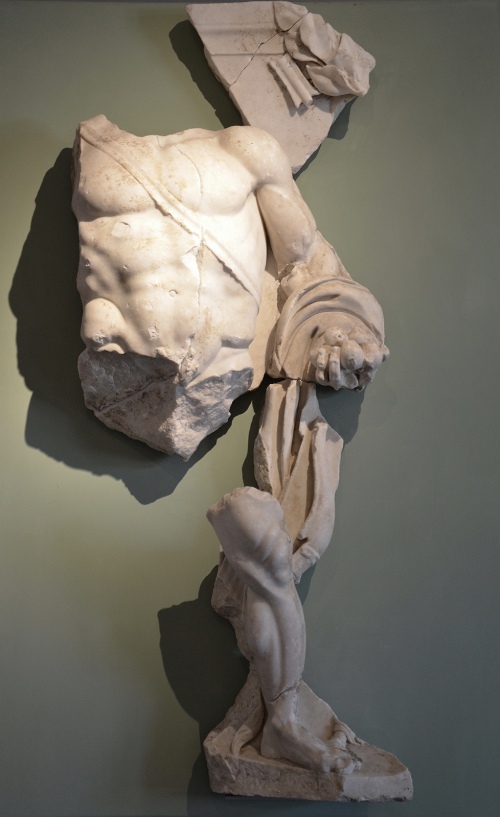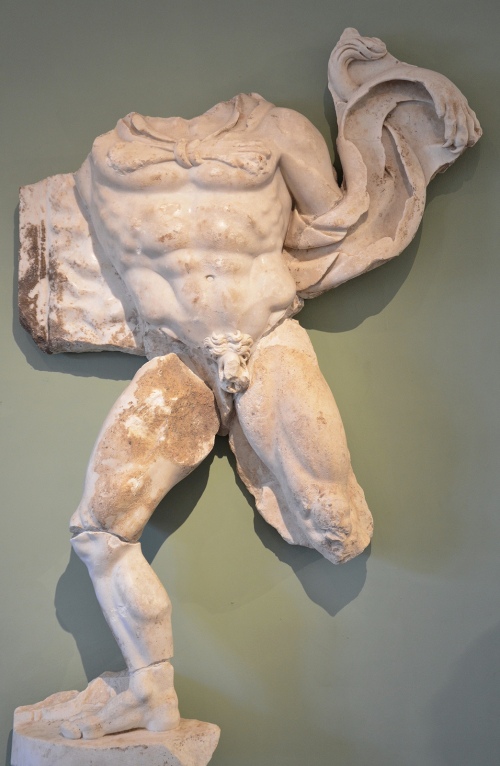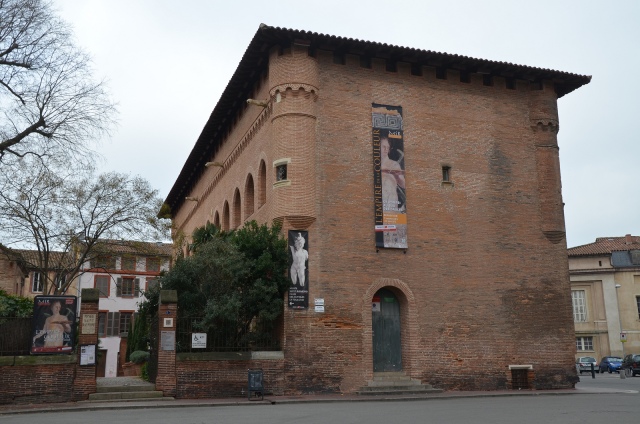In honour of Twitter’s international Museum Week (#MuseumWeek), I invite you today to discover some of my favourite sculptures from the collections of the Musée Saint-Raymond in Toulouse (France). The museum is among the best and richest archaeological museums in France and visitors can discover the Roman town of Tolosa (Toulouse in Roman times), the sculptures discovered at the Villa Chiragan and the remains of a necropolis from late antiquity. Its collection, spread over three floors, gives a fascinating glimpse of the history of Toulouse and its area.
Known since the 16th century, the first excavations at the Villa Chiragan were conducted in 1826. The villa was occupied for over four centuries, from the end of the 1st century BC to the early 5th century. Dozens of Roman marble portraits were unearthed as well as a unique ensemble of reliefs depicting the twelve labours of Hercules. The reliefs date from the end of 3rd century AD, during the time of the first Tetrarchy (‘Rule of Four’) instituted by Emperor Diocletian. The empire was effectively divided in two, with an Augustus and a subordinate Caesar in each part. Diocletian appointed fellow officer Maximian as Augustus of the West.
The emperor Maximian (286-305) was also referred to by the title of Herculius as he was under the protection of the hero Hercules. This connection between god and emperor helped to legitimize the emperors’ claims to power and tied imperial government closer to the traditional cult. A marble head of Emperor Maximian was discovered on the site of the Villa Chiragan. The emperor is depicted with similar features as Hercules; the head becomes narrow at the top, small eyes with a piercing look, prominent cheek bones, hollow cheeks, a strong lower jaw, and a very thick neck. This physique is close to that of his heroic protector Hercules.
The labours of Hercules reliefs appear to celebrate Maximian’s political actions and imperial victories in an allegorical manner. Such a program could have been ordered by a relative of the Emperor or by the Emperor himself. This means that the villa was a imperial domain during this period.
Hercules battling the Lernaean Hydra
To read about Hercules’ 2nd labour: The Lernean Hydra
Hercules capturing the Erymanthian Boar
To read about Hercules’ 4th labour: The Erymanthean Boar
Hercules cleaning the Augean stables
To read about Hercules’ 5th labour: The Augean Stables
Hercules slaying the Stymphalian Birds
To read about Hercules’ 6th labour: The Stymphalian Birds
Hercules capturing the Cretan Bull
To read about Hercules’ 7th labour: The Cretan Bull
Heracles capturing the Mares of Diomedes
To read about Hercules’ 8th labour: The Horses of Diomedes
Hercules fighting the Amazons
To read about Hercules’ 9th labour: The Belt of Hippolyte
Hercules fighting the three-headed monster Geryon
To read about Hercules’ 10th labour: Geryon’s Cattle.
You can also read an interpretation of this unique relief here and learn why the monster in this relief is represented as a Roman soldier.
Hercules stealing the apples of the Hesperides
To read about Hercules’ 11th labour: The Apples of the Hesperides
Hercules capturing Cerberus
To read about Hercules’ 12th labour: Cerberus
A marble statue of Hercules resting was also found at the Villa Chiragan (although it may have been executed before the Labours reliefs). This statue is one a number of copies of a bronze statue created by Lysippos in the late fourth century BC. At the end of his twelve labors, Hercules is exhausted. The statue shows the tired hero leaning on his club, which is partly concealed by the skin of the Nemean lion. Behind his back he holds the golden apples of the Hesperides, one of Hercules last labours.
Musée Saint-Raymond, Toulouse
Opening hours: The museum is open every day from 10am till 6pm.
Admission rates: 4 € fee (permanent collection) / 8 € fee (with exhibition).
Free for students, teachers at the Fine Arts School of Toulouse, and youth under 18 years of age.
A guidebook is available in three languages : french, english, spanish.
Address: 1 ter place Saint-Sernin 31000 Toulouse
Originally published on Following Hadrian, republished with permission.
